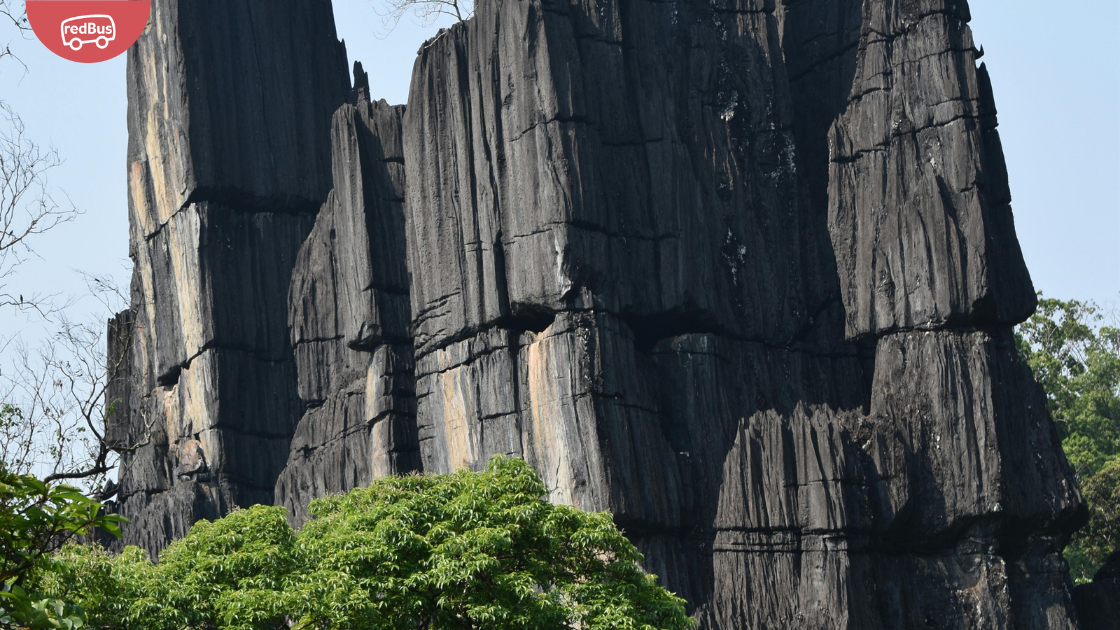The Ajmer Dargah is a Sufi tomb and one of the holiest sites in Rajasthan. It is one of the most popular places in Ajmer. It is located close to the Taragarh Hill in the Aravalli Mountains. A devotee who worships with a sincere heart and soul at this Dargah is said to have all his or her wishes granted. This shrine contains the remnants of Saint Chisti. He is considered Muhammad’s descendant and moved to India at his demand. It has significantly contributed to the public’s propagation of Islamic ethical and spiritual ideals.
Humayun, the emperor of the Mughal Empire, established the Ajmer Sharif Dargah. The dargah complex contains multiple mosques established by Shah Jahan and Akbar, who decided to travel to Ajmer at least once a year. The building is an architectural wonder that is ideal for connecting with your spiritual self. It is not necessary to be religious to visit this site. The tranquillity and calm of this location cannot be found anywhere else. At the Dargah, people of many religions leave flowers, non-alcoholic fragrances, velvet cloth and sandalwood as offerings. Its doors are wide open to individuals of all religions and faiths following his secular beliefs.
History of the Ajmer Dargah Sharif
Moinuddin Chisti was a Persian who had moved to Lahore, which happened to be part of the country at the time. The grave of Hazrat Khwaja Moin-d-din is located at Khawaja Gharib Nawaz Dargah Ajmer. Chisti was the pioneer of Islam religion in India as well as a world-renowned Islamic preacher. He travelled from Persia to India and briefly lived in Lahore before settling in Ajmer. It is reported that when the legendary Sufi saint turned 114, he confined himself for six days to chant and left his human body behind, leading to this great shrine’s creation in his remembrance. He deceased in 1236, and his final resting site has been acknowledged to have tremendous supernatural abilities since then. Mosques were afterwards built here by Mughal emperors Humayun, Shahjahan, Akbar, and Jahangir. The primary tomb gateway is named Nizam Gate, which was built by Shahjahan and is also known as Shahjahani Gate. Following that is Buland Darwaja. The Urs flag is raised, signalling the start of the Urs celebration. Any desire expressed from a sincere heart is said to be granted in Dargah Sharif.
Historical and Spiritual Significance
The Ajmer Dargah Sharif is the final resting place of Hazrat Khwaja Moinuddin Hasan Chishti, a revered Sufi saint and spiritual guide. He was born in 1142 CE in Sistan, present-day Iran. Hazrat Khwaja Moinuddin Chishti is widely acknowledged for spreading Sufism in India, emphasizing love, peace, and tolerance among various communities.
Hazrat Khwaja Moinuddin Chishti arrived in Ajmer in the early 13th century, where he spent his life in the service of humanity and imparted spiritual teachings to his followers. His simple yet profound teachings attracted a large following and made a lasting impact on the socio-religious fabric of the region.
Spiritual Practices and Rituals
The Ajmer Dargah Sharif is a place where people of all faiths come to offer their prayers and seek blessings. The atmosphere is one of unity, tolerance, and communal harmony, reflecting the teachings of Hazrat Khwaja Moinuddin Chishti. Devotees participate in various rituals, including offering floral chadar (a sheet) and lighting incense sticks at the saint’s tomb.
Qawwali, a traditional form of Islamic devotional music, is an integral part of the spiritual experience at the Dargah Sharif. The soulful renditions by qawwals (singers) convey messages of love, peace, and devotion, touching the hearts of the listeners.
Urs Festival
One of the most significant events at Ajmer Dargah Sharif is the annual Urs festival, commemorating the death anniversary of Hazrat Khwaja Moinuddin Chishti. The Urs, meaning “wedding” in Arabic, symbolizes the union of the individual soul with the divine.
During the Urs festival, which lasts for six days, the Dargah witnesses an influx of pilgrims and devotees from all over the world. The shrine is beautifully decorated, and the air is filled with spirituality, fervor, and the melodious strains of qawwali. The celebrations include the offering of chadar, special prayers, and a grand procession known as the Jannati Darwaza.
Planning Your Visit to Ajmer Dargah Sharif During Urs Festival
-
Travel Arrangements: Plan your journey to Ajmer well in advance, considering the increased number of visitors during the Urs festival. Book your bus tickets on redBus for a convenient and comfortable travel experience.
-
Accommodation: Ajmer witnesses a surge in pilgrim footfall during the Urs festival. Ensure you book your accommodation early to secure a place that aligns with your preferences and budget.
-
Clothing and Etiquette: When visiting a sacred place like Ajmer Dargah Sharif, it’s advisable to dress modestly as a sign of respect. Follow the customs and etiquettes observed by the pilgrims.
-
Participate in Rituals: Immerse yourself in the spiritual ambiance by actively participating in rituals, prayers, and Qawwali sessions. Be open to absorbing the positive energy and tranquility that pervade the surroundings.
-
Seek Blessings: Approach the tomb of Khwaja Moinuddin Chishti with sincerity in your heart. Offer your prayers, seek blessings, and spend moments in introspection.
Urs Festival Dates
Commemorating the Urs of Hazrat Khwaja Garib Nawaz R.A. in Ajmer Sharif in 2024. The Annual Urs at Ajmer Sharif in 2024, set to commence on January 13th, 2024, stands as a globally recognized pilgrimage, attracting individuals from all corners of the world who gather to pay homage to Hazrat Khwaja Gharib Nawaz (R.A.).
- The Urs Itinerary Flag Hoisting: The Urs Festival initiates with the ceremonial flag hoisting on January 8th, 2024.
- Opening of Jannati Darwaza: The gates of the Jannati Darwaza will swing open on January 13th, 2024.
- Chatti Sharif Fateha and Dua: Join us in offering heartfelt prayers and Dua on January 18th, 2024.
- Qul Ki Fateha: The culmination of this spiritual journey will take place on January 21st, 2024.
Architecture of the Dargah
Ajmer Sharif Dargah was originally constructed during the Mughal era, reflecting the characteristic Mughal architectural style. The Dargah’s primary architectural elements include a domed tomb, two courts, a mosque established by Shah Jahan, and a large entryway known as the Nizam Gate. The other entrances are the Buland Darwaza, Shahjahani Gate, and the Buland Darwaza. The Jannati Darwaza is a silver gate on the mosque’s western side and is only open four times yearly. Jalahara is a pool of water with purified water that has been used for the Dargah’s sacred duties since the shrine’s foundation. The majority of the shrine’s building is fashioned in white marble. Together with this, silver and gold finishing is used to accentuate the Dargah’s everlasting beauty. Hazrat Khwaja Moin-Ud-Din Chisti’s burial is preserved in a domed enclosure secured by a silver fence and marble wall. Visitors will not be able to ignore the enormous cooking pots called Kadhaaye. On special occasions, they are used to make rice pudding.
Social and Charitable Activities
Apart from being a spiritual center, Ajmer Dargah Sharif is known for its philanthropic and humanitarian activities. The Dargah administration is involved in various charitable endeavors, including providing free food to thousands of visitors daily, running educational institutions, and organizing medical camps for the needy.
Best Time to Visit the Dargah
Ajmer is best visited in the winter. The Dargah is filled with exquisite Sufi music from November to March. The finest season for visiting Ajmer Sharif is in the initial six days of Rajab when the popular Urs Festival is held. During this time, the Dargah is lavishly decorated, providing tourists with a visual delight.
Famous Bus Operators Serving Buses To And fro From Ajmer
The Rajasthan State Road Transport Company operates semi-deluxe and deluxe buses, both non-air-conditioned and air-conditioned, connecting Ajmer to destinations like Udaipur, Delhi, Jodhpur, Jaipur, and Jaisalmer. The major bus operators that serve to and fro from Ajmer include Shatabdi Travels, VK Jain Travels, Kamal Travels, Gorsiya Travels, and many more.
Famous Routes to Ajmer
- Jaipur to Ajmer
- Jodhpur to Ajmer
- Indore to Ajmer
- Delhi to Ajmer
- Ahmedabad to Ajmer
- Kota to Ajmer
- Kanpur to Ajmer
- Rajkot to Ajmer
- Bikaner to Ajmer
- Gurgaon to Ajmer
- Sikar to Ajmer
- Agra to Ajmer
- Lucknow to Ajmer
Conclusion
Ajmer Dargah Sharif stands as a beacon of love, unity, and spirituality, transcending boundaries and fostering peace among people of different backgrounds. It is a timeless testament to the teachings of Hazrat Khwaja Moinuddin Chishti, whose message of love and compassion continues to resonate with seekers of truth and spiritual seekers to this day. Pilgrims and visitors leave the Dargah with a sense of inner peace, faith, and a strengthened belief in the power of love and humanity.
As you embark on this spiritual journey to Ajmer Dargah Sharif during the Urs festival, may you find solace, peace, and divine blessings. The Urs festival is not just a celebration; it’s an opportunity for introspection, spiritual growth, and connecting with the divine.
Plan your visit with redBus, your trusted travel partner, ensuring a safe and comfortable journey. Book your bus tickets to Ajmer, and let the sacred atmosphere of Ajmer Dargah Sharif during the Urs festival guide you on a profound spiritual experience.







